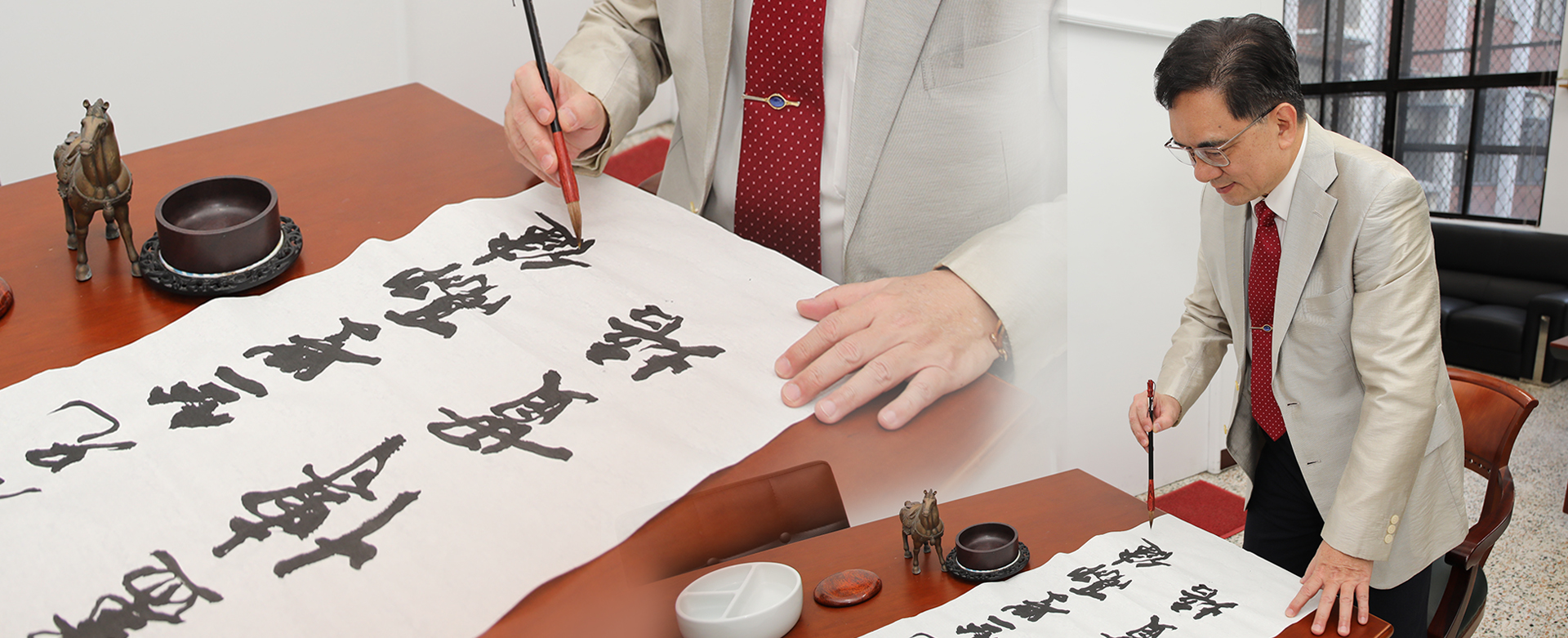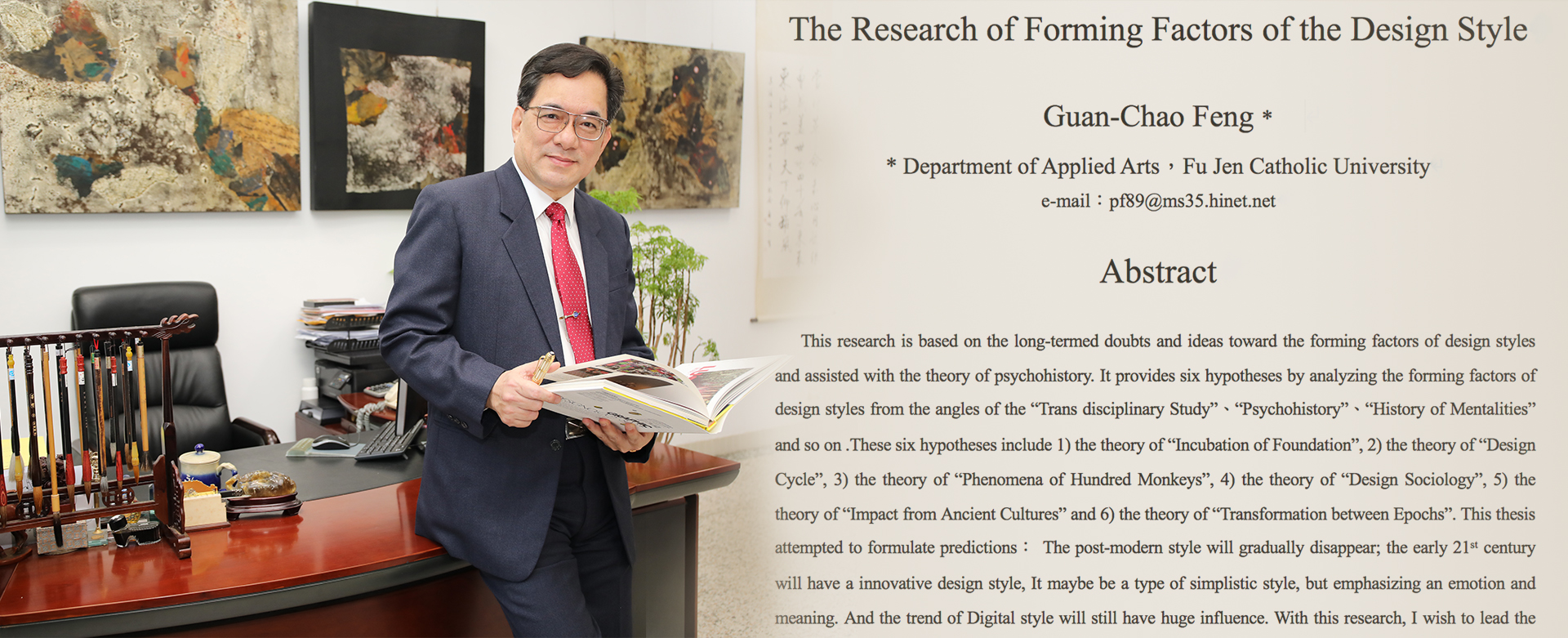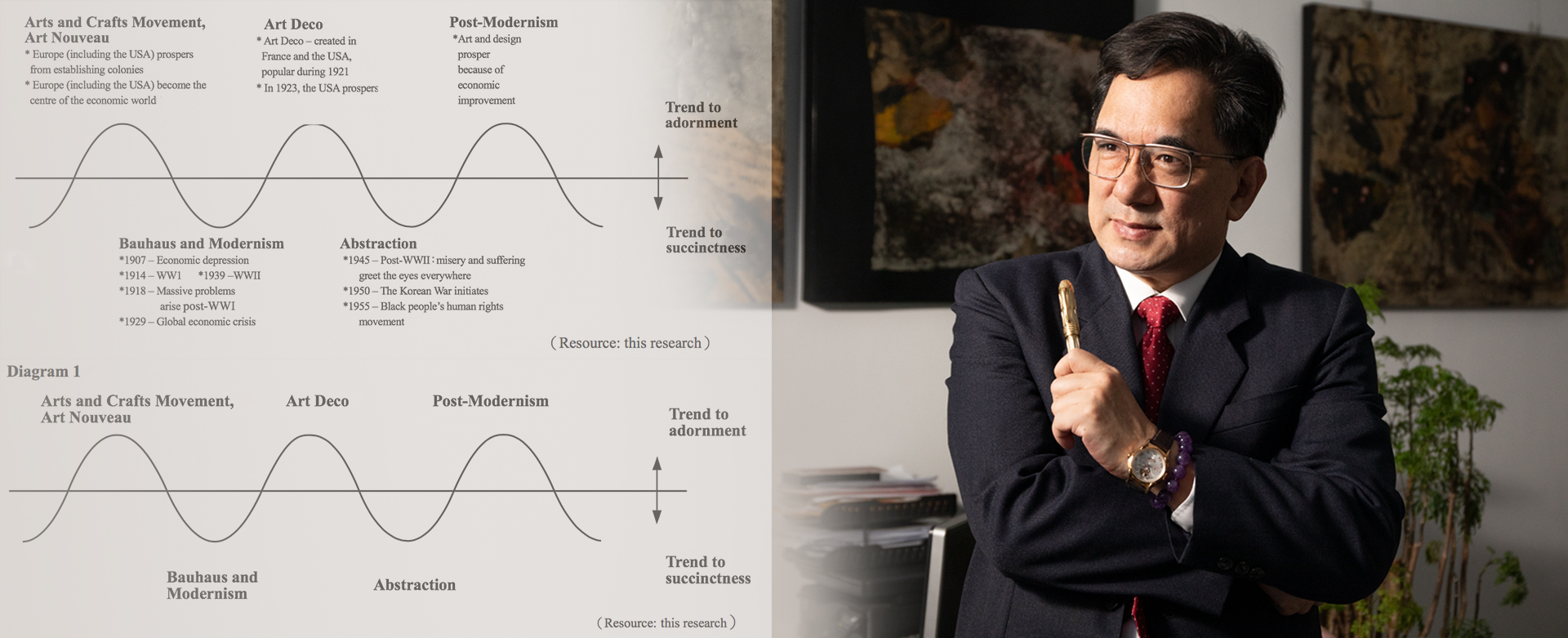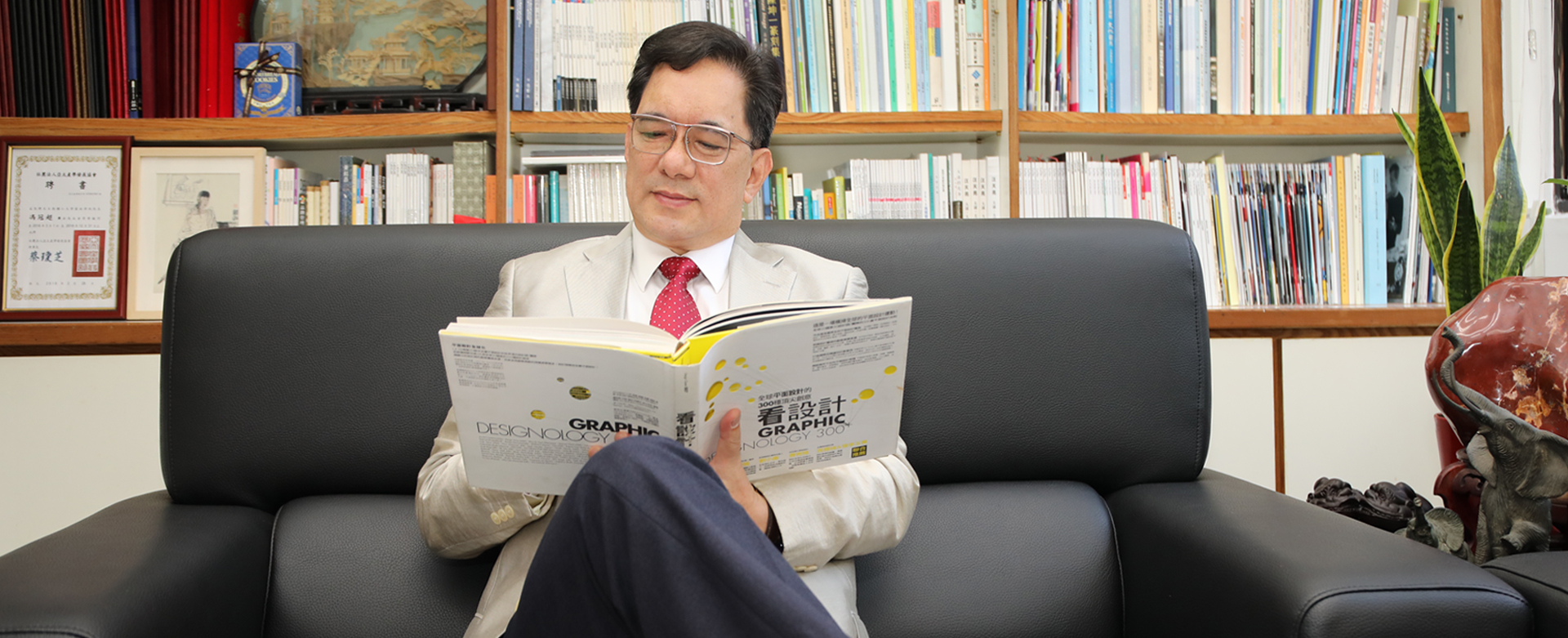Featured Scientist
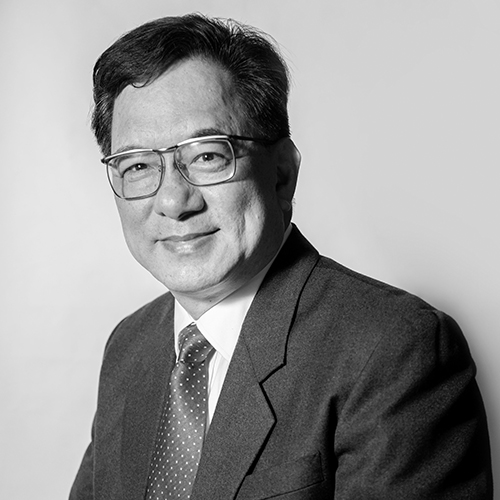
Guan-Chao Feng, Ph.D.
Professor
The Research of Forming Factors of the Design Style
This research is based on the long-termed doubts and ideas regarding the factors that influenced the emergence of design styles. We present the following six theories from perspectives such as transdisciplinary study, psychohistory, and the history of mentality: (1) the theory of the incubation of foundation, (2) the theory of the design cycle, (3) the Hundredth Monkey Phenomenon, (4) the theory of design sociology, (5) the theory of the impact of ancient cultures, and (6) the theory of transformation between epochs. The following predictions were formulated according to the aforementioned theories. (1) Postmodernism will gradually disappear, giving way to an entirely original design style. (2) This design style will initially avoid complex design styles and readopt historical styles to shift itself closer to Neomodernism. (3) The aforementioned new style will never stray from a straight path or demonstrate the defects of the current postmodernist style. It will be a simplistic style that embodies meaning and emotion. (4) The strong influence of the digital style trend will remain. Through this research, we hope to lead the study of the history of design styles to a new future.
3. Provision of the Six Theories Related to the Formation Factors of Design Style
3-1 Theory of the Incubation of Foundation
3-2 Theory of the Design Cycle
In psychology, physiology, and physics, a circle is not simply a rule. In this paper, we suggest that the test in the design style also produces the possibility of a cycle. Consider the classical Greco-Roman art style, which was maintained until the 10th century AD. Otto the Great eventually recovered it as Romanesque art. During the Renaissance era, between the mid-14th and 15th centuries, the aforementioned style was exhibited in Gothic art. In the following two centuries, its traces could be detected in Rococo and other styles. Supported by Napoleon, the classical Greco-Roman art style was given an encore on the art stage as the Neoclassical style in the 1810s. When the age of Modernism arrived, most people may have thought that Greco-Roman art was behind them. However, it has reappeared in the form of metaphorical collages in the current postmodern era. Indeed, human beings have a desire to pursue new objects. No design or art style in history has ever been presented in the same manner forever. Even art in the Renaissance, which was elevated to new heights, was replaced by Mannerism. These observations demonstrate that human beings frequently alter the approaches through which they present their ideas.
As displayed in the following diagram, the changes between complexity and simplicity in design styles and the developmental process of recent designs were investigated as lines of longitude and latitude, respectively. The complex and decorative Arts and Crafts movement is the first movement in this fascinating cycle, followed by the Art Nouveau movement and Bauhaus movement, which held that elaboration was a sin.
Through the 1920s and 1930s, Art Deco flourished in France and the United States—then exceptionally wealthy countries that eschewed simple styles. Abstractionism, a simple, unadorned style born of economic recession, reigned from the end of World War II to 1970. No complex postmodern styles have taken root since then.
The variability in the factors influencing the design cycle—long or short, swift or measured—means that it does not always flow. However, changes to contrasting forms always occur through a cyclical flow.
3-3 Hundredth Monkey Phenomenon
3-4 Theory of Design Sociology
The celebrated Russian ascetic Georgi Plekhanov claimed, “The situation of social, economic, political and other such factors penetrate a point of social psychology, affecting and changing the style and face of art.” He also stated, “If we desire to understand a country’s literature, history and art history but lack meticulous research and knowledge in social psychology, it is entirely impossible to comprehend the historical materialism explanation of the ideology system.”
In his publications, including A Contribution to the Critique of Political Economy, Karl Marx addressed the effects of art on and the reaction of art to complications in politics and the economy. Plekhanov agreed with the three principles proposed by Marx and asserted that the process or development of art is controlled or decided by lower economic structures and shaped by an indirect relationship between the center point and the factor power system. (Omit)
3-5 Theory of Power Effects
The theory of power effects has been proven by numerous events in history in which a culture that developed a design style followed in the footsteps of a more powerful country. For instance, under the Tang Dynasty, China was the wealthiest country in the world and a prominent political power. Consequently, its culture and design styles became the target of emulation and the focus of attention of countries such as Japan and Korea. Later, in 18th-century Europe (including Russia), scholars and the upper classes enjoyed and applauded China’s art as well as its political and economic systems. As depicted in Diagram 4, China contributed the highest percentage of production during the aforementioned time. Art and design underwent extensive developments in the politically strong early Qing dynasty during the reigns of emperors Kangxi, Yong Zheng, and Qianlong. However, after 1830, with the rise of industrialization and maritime trade in Europe and the decline of the Qing dynasty, China was no longer regarded as a hegemonic power. This turn of events can be exemplified by the saying “the hill convulsed and the bell echoed.”
The late 19th century saw the rise of Japonisme, a European craze for Japanese art. Following the Meiji Restoration, Japan became the most powerful country in the world. It was a golden age, during which Europe celebrated Japanese furniture, porcelain, crafts, and ukiyo-e (woodblock prints and paintings). The 20th century was defined by the sweeping global advance of Westernization in the arenas of art, design, and lifestyle.
Consider Diagram 5, which illustrates design styles from after 1850 to 1900. The rate of artistic productivity in Europe and the United States, which was over 90%, was maintained into the 20th century. The rise of postmodernism, which emerged in post-1960s United States to become the most prominent design style in the world, can be captured by the saying “when the Tong Mountain falls in the west, the Luo Bell rings in the east.”
3-7 Phenomenon of the Crossing of the Centuries (Omit)
This research is related to the reasons for the formation of design styles and is based on the theory of psychological–historical science. We hope that we have opened a new area in the research of design styles through this review. However, because both time and resources were limited, most of the theory discussed in this paper is illustrated through dialectics by reference to treatises. The six proposed theories may contain points of contention that require further investigation. Applying psychological methodologies to the research of design history is challenging. We can only use idiomatic terminology and audiovisual methods to examine the individuals and events behind the development of these movements and make presumptions regarding their outcomes. This approach cannot enrich the understanding of design history.
According to the present discussion, the following four predictions are proposed:
1. Postmodernism will gradually disappear, giving way to an entirely original design style.
2. This novel design style will initially avoid complex design styles, such as collage, and readopt historical styles to shift itself closer to Neomodernism.
3. However, this new style will never stray from a straight path or demonstrate the defects of the current postmodernist style. It will be a simplistic style that embodies meaning and emotion.
4. The digital style trend will maintain a strong influence and merge with this new style to create a new fashion.
87 views

